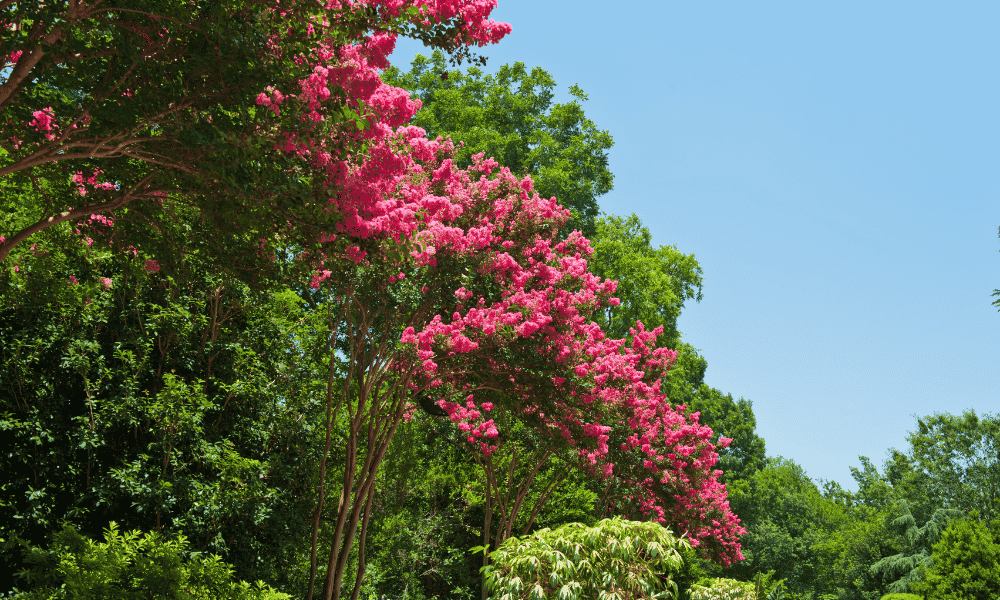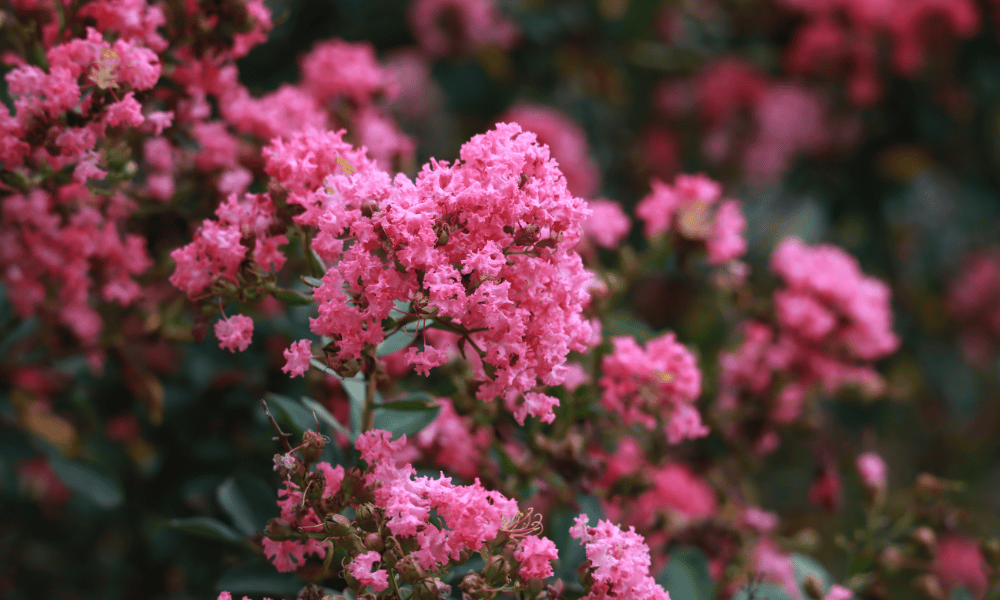Nothing says spring as boldly as the beautiful and luscious blooms of a crepe myrtle. Crepe myrtles are quite the statement plant, covered in bright clusters of flowers. But, do they do more than please the eye? Do butterflies like crepe myrtles too?
Yes, butterflies do like crepe myrtles. During full bloom, you can witness many butterflies enjoying the bountiful nectar. Like any flowering shrub or tree, crepe myrtles offer an abundance of benefits for butterflies to live and feed happily.
What Else Do Crepe Myrtles Attract?
The beauty and abundance of flowering crepe myrtles are not only irresistible to butterflies but to a wide range of other pollinators as well.
Bees and even hummingbirds love the bold bloom and sweet nectar from a blooming crepe myrtle tree.
Crepe myrtles tend to bloom once a year but have a longer bloom time of 90-120 days in warmer regions. However, some gardeners have had luck with pruning away the spent blooms quickly and encouraging a second bloom each season.
Crepe myrtles offer a beautiful centrepiece to your garden. They grow as small trees or large shrubs, making them a great height even at full maturity.
Butterflies and bees love the complexity of the crepe myrtle, finding shelter in their branches and food from their flowers.
There are various insects which like crepe myrtles. The aptly-named crepe myrtle aphid is the number one pest for myrtles. Ladybirds, assassin bugs and sharpshooters can also be found on crepe myrtles.
Yes, birds do like crepe myrtles. The tree isn’t hugely attractive to them as a food source, but they will feed on the insects attracted to crepe myrtles. The strong branches and full canopy also protect birds seeking shelter.

Which Varieties of Crepe Myrtle Attract Butterflies?
Crepe myrtles come in various shapes, sizes, colours, and bloom seasons. These trees and shrubs are originally from warmer areas of the Indian subcontinent and Asia.
These plants prefer warmer weather and tend to do well in areas that do not have freezing winters.
In the southern United States, these trees and shrubs can be found decorating cities like New Orleans, where they thrive in the humidity.
Today, plenty of cross-bred and engineered varieties can sustain and survive the harsh northern winters for those who want to experience the beauty of crepe myrtle in full bloom in our own yards.
Choosing which type of crepe myrtle to plant depends on where you live. Be sure to buy from local nurseries and ask the professionals if the tree or shrub will survive and thrive in your climate.
After choosing a variety that fits your area, deciding between a tree or a shrub variety is next. Some trees can get 20 feet tall, much larger than a 4-foot shrub.
Decide where you plan to plant your crepe myrtle to help pick which size would be the best fit for your space.
Crepe myrtles have pretty monochromatic flower colour options. Almost all varieties bloom in pink, white, red, or deep purple.
While butterflies would be attracted to any of these colours, if you are also hoping to attract bees, do not choose a red or reddish colour flowering plant.
Bees cannot see the colour red and instead view it as black. Black flowers are not appealing to them – obviously! Butterflies have no problem seeing red and will love to feed on your crepe myrtle regardless of the flower colour.
Why Do Butterflies Like Crepe Myrtle?
Butterflies love the abundance of flowers that a crepe myrtle plant offers. When the plant is in full bloom, hundreds if not thousands of flowers are flowing with delicious nectar for them to enjoy.
Even better than the abundance of flowers is the lack of distance the butterfly has to travel to eat its fill.
Butterflies love flowers clustered together as they do not have to use a lot of energy to gather a lot of nectar. Crepe myrtles also offer the benefit of shelter to butterflies and other insects.
The strong branches and ample foliage allow places for butterflies to rest and hide from predators.
Crepe myrtles also offer protection from the weather. When the winds are strong or there is rain, butterflies look for places to hide and shelter from the storms as they struggle to fly in poor weather conditions.
Want to Attract Butterflies to Your Garden?
We’ve Put Together an Ultimate Guide to Attracting Butterflies to Your Garden Including Our Top 11 Plants You NEED to Start Growing Today:
Summary
Crepe myrtle trees are not only beautiful for us, but butterflies love them too. These bushes and trees offer more than just colour, they offer bountiful blooms bursting with nectar that butterflies and other pollinators love too.
Thanks to their impressive bloom time and strong branches, butterflies will flock to and stay near crepe myrtle trees for both food and protection.
When choosing a crepe myrtle plant, choose one that is meant for your climate. These plants are tropical in origin and prefer places that do not have freezing winters. However, you can find plants bred and created for your climate zone.







